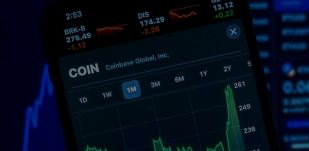Top 10 Most Traded Currencies in the World
The foreign exchange market is the largest, most heavily traded financial market in the world. Daily volumes exceed $6.6 trillion (USD) and total market value is more than $2.4 quadrillion. Across the globe, 197 nations use more than 180 different currencies to manage their economies, paying for everything from a loaf of bread to a 100-storey skyscraper. However, not all money is created equal. A handful of ‘hard’ currencies dominate the world’s forex, commodities, stocks, property, and industrial markets. These giants are the bedrock of the world economy, with the top ten accounting for more than 88% of the global forex market.
But who are these financial Goliaths, and what keeps them on top? Read on to discover the world’s top ten most traded currencies and the reasons they’re stronger than the rest.
The Currencies – Ranked by Forex Volumes
1. US Dollar (USD)
Currency symbol: $
Coming in at number one on our list of the top currencies in the world is the US dollar. USD rose to global prominence in the 1920s when it eclipsed the British pound as the leading form of trade credit. This dominant position was reinforced at the close of World War II when the greenback became the world’s reserve currency – the official backstop for the global economy. By far the most traded currency in the world (accounting for approximately 44% of daily forex volumes), the dollar is the common denominator in everything from oil and gas, to tech trading, movie box office revenues, to stocks and shares, and the price of gold. In 2019 the US dollar was used in over 90% of international trade. In forex it is most frequently paired with euros, Japanese yen, and Canadian dollars.
2. Euro (EUR)
Currency symbol: €
Compared to other top currencies, the euro is a relative newcomer, only becoming the physical currency of most European Union countries in 2002. Having replaced the French franc, Italian lira, German deutschmark, Spanish peseta and other well-known currencies, the euro is now used by 19 of the 27 nations that comprise the EU. Representing 16% of global foreign exchange and only second to the US dollar, the euro is the official currency of the world’s largest trading bloc and the globe’s standby reserve currency. In its 20 years' in existence, the euro has experienced large swings in value, trading below the US dollar at launch, climbing to a high of nearly $1.60 in 2008, and falling back to parity in 2022. The currency is most frequently paired with the US dollar and the British pound.
3. Japanese Yen (JPY)
Currency symbol: ¥
Created as the nation’s standard currency in 1871, the Japanese yen was supported by gold until World War II, when the currency lost most of its value. With US support, the yen was effectively refloated from 1945 and grew in strength through a mixture of government currency interventions and a competitive export market that ensured a trade surplus. After reaching an all-time high against the US dollar in 1995, the yen has since fallen back to the values it achieved in the late 1980s. Representing 8.4% of global forex, and as a core currency of Pan Pacific trade, the yen is most often paired with the US dollar and Chinese renminbi.
4. Pound Sterling (GBP)
Currency symbol: £
The British pound, or pound sterling, is the world’s oldest currency still in use. Rising to global dominance during the period of the British Empire, the currency lost its number one position in the years after 1918, when colonial independence and war debts impacted the United Kingdom’s economy. Accounting for 6.4% of daily forex volumes, GBP is now the fourth most traded currency in the world. It sits with the US dollar, euro, yen, and renminbi in the basket of currencies used by the IMF to calculate loans to nations in need of financial support. Typically paired with the US dollar and euro, the pound still maintains a strong presence in many of the 56 Commonwealth nations.
5. Australian Dollar (AUD)
Currency symbol: $, A$
Representing almost 4% of global forex volumes, the Australian dollar rounds out the top five currencies in the world. Mostly paired with the US dollar, yen and renminbi, the A$ replaced the Australian pound (a relic from the nation’s status as a British colony), in 1966. Widely used in the trade of fuel ore, raw minerals and livestock, the currency retains unrivalled financial hegemony in the Oceanic region.
6. Canadian Dollar (CAD)
Currency symbol: CA$
Coming in at number six in our top ten of the most used currencies in the world is the Canadian dollar. Representing 2.5% of global forex trade, CAD (like the AU$) is a regional reserve currency - a result of Canada's relative economic soundness, the Canadian government's strong sovereign position, and the stability of the country's legal and political systems. Benefitting from a shared border with the United States and large volumes of reciprocal trade, Canada and CA$ are often viewed as barometers of US economic activity – providing insights that may not be visible by direct observation. Even though it is often held as a store of value by Central and South American banks, the Canadian dollar’s currency pair is mostly USD.
7. Swiss Franc (CHF)
Currency symbol: SFr
Switzerland’s famous banking secrecy laws are not as strong as they once were, but the Swiss franc is still one of the world’s strongest currencies, retaining powerful independence amid the Eurozone. From 2005 the value of CHF was partially backed by gold (20%), with the Swiss central bank holding 1,290 tonnes of bullion reserves to protect the currency. This support was withdrawn in 2014, but Switzerland’s strong banks, stable government, sound economy, and steadfast neutrality helped maintain the ‘safe haven’ status of the currency. As a result, CHF is typically the first port of call for forex traders when the global economy hits a bump in the road. The ‘Swissie’ represents 2.48% of global forex volume - a figure that underlines the currency’s ongoing ability to punch above its weight.
8. Chinese Renminbi (RMB/CNY) or (RMB/CNH)
Currency Symbol: ¥
Also known as the yuan, the Chinese renminbi is the most popular currency in East Asia. Once a tightly controlled, non-fungible currency, the CNY has been partially convertible since 2012, and the currency now trades within a narrow band specified by the Chinese central government. (As of 2013, the renminbi is convertible on current accounts but not capital accounts). Comprising 2.16% of global forex volumes, the renminbi is becoming more widely accepted in global trade and is in the process of adoption as a reserve currency by more than a dozen African nations. CNY is mostly paired to USD.
The renminbi (RMB) is split into two markets: CNY, the currency that is traded on mainland China, and CNH, the currency traded offshore from mainland China, such as in Singapore and the US.
9. Hong Kong Dollar (HKD)
Currency Symbol: HK$
The ninth most traded currency in the world is the Hong Kong dollar. During the State’s period of British control, the Bank of England supported HKD. However, high volatility in the early 1980s led to the adoption of a linked exchange rate system in 1983. This left the Hong Kong dollar pegged to the US dollar, backed by Hong Kong’s huge reserves of USD. (Hong Kong law dictates all newly created HKD must be backed by an equal sum of US dollars held in deposit). Viewed as a stable pass-through currency to mainland China’s markets, HKD accounts for 1.77% of global forex volumes and is commonly paired to USD and CHY.
10. New Zealand Dollar (NZD)
Currency symbol: NZ$
Introduced in 1967 to replace the colonial-era NZ pound, the New Zealand dollar completes the list of the top ten currencies in the world. Initially pegged to the US dollar, NZD has been a fully floating currency since 1985. As the influence of USD on the Kiwi has receded, so the currency has gone through periods of over-valuation, necessitating market intervention by New Zealand’s central bank. These interventions have had mixed results, especially in the period since the Financial Crisis of 2007/8. Today, NZD accounts for 1.04% of global forex volumes and trades well above the USD range set in 1985. It is mostly paired to USD, GBP, and AU$.
Think Outside the Money Box
The currencies on this list have many variables. Some have regional influence. Others dominate the globe. Many are fully convertible, whilst some have pegged exchange rates backed by US dollars. These pros and cons may seem marginal, but they could create new opportunities for businesses engaged in cross-border trade. Selecting the right currency for your transaction could do more than payoff financially. It may also eliminate unpredictability, and ensure your payments are always seamless and speedy.
Clear Currency for Businesses
With Clear Currency, you can access competitive exchange rates and make international transfers in minutes. Our friendly team of currency specialists can offer guidance on risk mitigation tools designed to protect your bottom line, which could save you more of your money. Contact us, or sign up for an account today.
Related Articles
How to Mitigate Foreign Exchange Risk
Currency risk can have a significant effect on the efficiency and profitability of any international business. Each exchange rate movement affects how much you receive from sales and what you pay to suppliers.
Read more
Moving to Dubai from the UK: Checklist
You’re ready for a new life overseas and have decided you’re moving to Dubai. Now it’s time to consider the various costs involved, from your visa and accommodation, to health insurance, shipping your belongings and bringing your beloved pets along too.
Read more
Currency Outlook Quarter 1 2023
Clear Currency looks back at the performance of the US dollar, euro and sterling in Q4 2022, and assesses what might be in store for Q1 2023.
Read more


